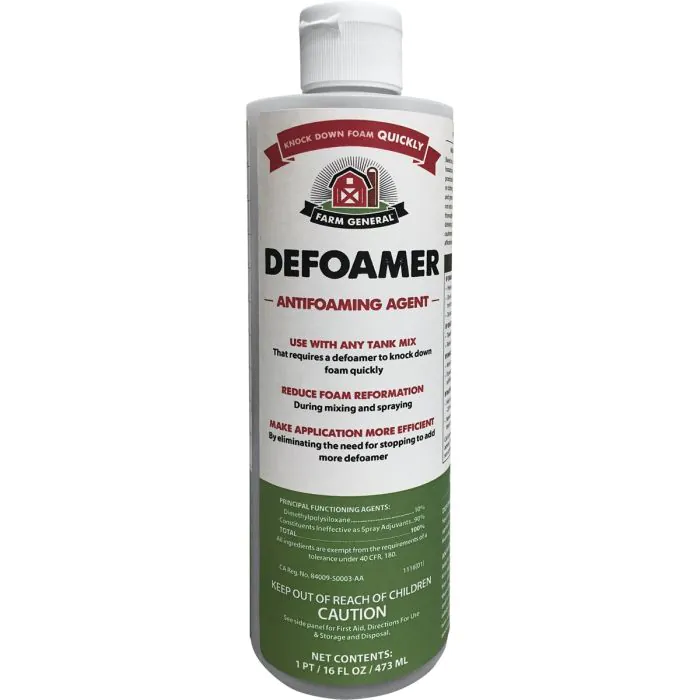A Complete Guide to Choosing the Most Effective Chemical Defoamer for Your Needs
A Complete Guide to Choosing the Most Effective Chemical Defoamer for Your Needs
Blog Article
Exactly How a Chemical Defoamer Can Boost Efficiency in Your Workflow and Procedures
In today's affordable commercial landscape, functional effectiveness is vital, and the duty of a chemical defoamer can not be forgotten. By resolving foam-related obstacles that interrupt processes, defoamers not only facilitate smoother procedures yet also contribute to set you back financial savings and enhanced item high quality.
Understanding Chemical Defoamers
Chemical defoamers play a vital function in numerous commercial procedures by effectively preventing and lowering foam development. Lathering can lead to functional ineffectiveness, boosted production prices, and jeopardized product top quality. Defoamers are specialized chemical additives created to interrupt the stability of foam bubbles, consequently enabling smoother handling and improved performance across numerous markets, including food and drink, pharmaceuticals, and wastewater treatment.

These agents generally contain surfactants, oils, or polymeric compounds that reduced the surface stress of the liquid, assisting in the collapse of foam. The mechanism whereby defoamers operate usually involves the destabilization of foam frameworks, enabling quicker water drainage of liquid and the release of entraped air. Different formulations are customized to specific applications, taking into consideration factors such as compatibility with the system, temperature level, and the nature of the fluid being dealt with.
Recognizing the make-up and functionality of chemical defoamers is necessary for picking the appropriate product for an offered application. By optimizing defoamer choice based upon process demands, markets can enhance operational performance, mitigate foam-related challenges, and ultimately improve overall productivity.
Benefits of Using Defoamers
Utilizing defoamers can substantially boost operational effectiveness throughout various sectors by effectively reducing foam-related concerns. The existence of foam can disrupt procedures, bring about raised downtime, lowered productivity, and potential high quality degradation in end products. Defoamers help fight these difficulties by damaging down foam frameworks, consequently permitting for smoother procedures.
Among the primary advantages of making use of defoamers is the reduction of waste and revamp. By minimizing foam development, defoamers enhance the consistency of procedures, making certain that products are used effectively. This not only lowers operational costs but also adds to sustainability initiatives by reducing resource consumption.
Additionally, defoamers can improve product quality. In making setups, too much foam can cause incongruities in item attributes, influencing customer fulfillment. By managing foam levels, defoamers help maintain the wanted physical residential or commercial properties of products.

Applications in Numerous Industries
The effectiveness of defoamers prolongs throughout a vast array of markets, where their application addresses certain foam-related difficulties integral to each sector. In the food and drink sector, defoamers are vital for enhancing production processes, such as developing and dairy products handling, where too much foam can prevent circulation prices and reduce efficiency. By reducing foam, these agents improve product high quality and consistency.
In the chemical production market, defoamers are utilized in procedures like paint manufacturing and wastewater treatment. Here, they avoid foam formation that can disrupt mixing and different stages, thus improving the overall efficiency and performance of procedures.
In drugs, defoamers play a vital function in the solution of liquid medications, making certain appropriate dosage and stability by regulating foam during mixing and storage space. (Chemical Defoamer)
In addition, in the farming market, defoamers are utilized in chemical formulations to boost application effectiveness and lessen waste.
Picking the Right Defoamer
Selecting the appropriate defoamer is critical for accomplishing optimum performance in various applications. The option procedure ought to begin with a detailed understanding of the certain problems at hand, consisting of the sort of foam present, the processing problems, and the chemical compatibility with other formulation elements.
Defoamers are formulated from a visit this website selection of products, including silicone, mineral oils, and fats. Determining the right make-up is essential, as different products exhibit varying efficiency in varied settings. For example, silicone-based defoamers are usually favored in high-temperature applications as a result of their stability, while organic defoamers may be preferable for water-based systems.
Additionally, take into consideration the defoamer's effect on the end product. Some solutions can change the visual or practical buildings, making it imperative to choose a defoamer that meets product requirements without jeopardizing top quality.
Evaluating is an additional essential action in selecting a defoamer. Small-scale tests can provide valuable insights into the defoamer's performance, allowing for modifications prior to major application. By meticulously evaluating these aspects, businesses can enhance performance and make sure that the defoamer successfully satisfies their operational needs.
Best Practices for Application
Implementing a defoamer efficiently needs mindful click to investigate preparation and adherence to best methods to maximize its performance. First, conduct a thorough analysis of the particular application and foam qualities. Understanding the kind and source of foam will certainly assist the selection of the most suitable defoamer formulation.
Next, establish the optimal dose (Chemical Defoamer). Begin with a small-scale trial to determine the minimum effective concentration, as excessive usage can result in adverse results on item quality or functional performance
Tracking and adjusting the application technique is critical; make certain that the defoamer is presented at the appropriate factor while doing so for optimal effect, such as during mixing or right away after foam formation.

In addition, keep clear interaction with all relevant employees to ensure constant application techniques and to share insights on efficiency outcomes.
Final Thought
In final thought, the utilization of chemical defoamers plays a crucial function in improving operational effectiveness across diverse markets. Eventually, the consolidation of defoamers right into commercial procedures fosters dependability and contributes to general efficiency improvement.

In the food and drink market, defoamers are crucial for enhancing manufacturing processes, such as brewing and dairy products handling, where excessive foam can impede circulation prices and decrease effectiveness. Silicone-based defoamers are often preferred in high-temperature applications due to their security, while natural defoamers may be a lot more ideal for water-based systems.
Report this page